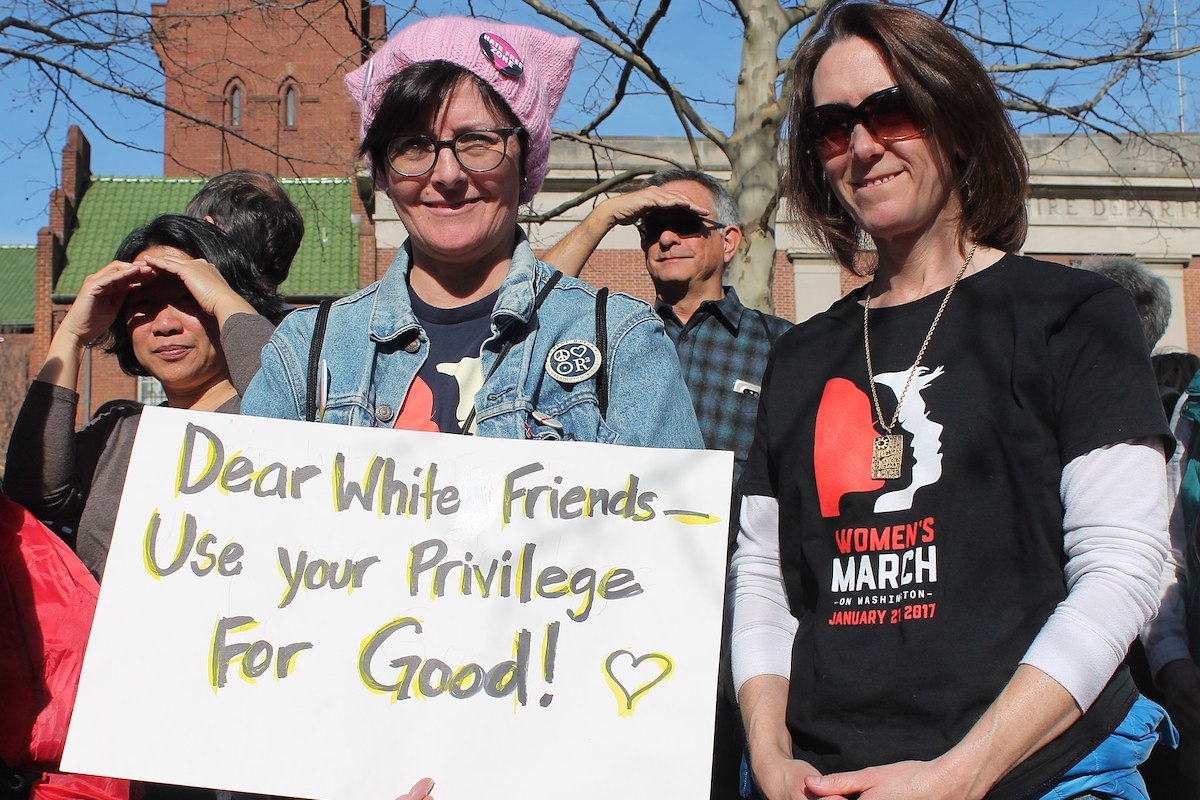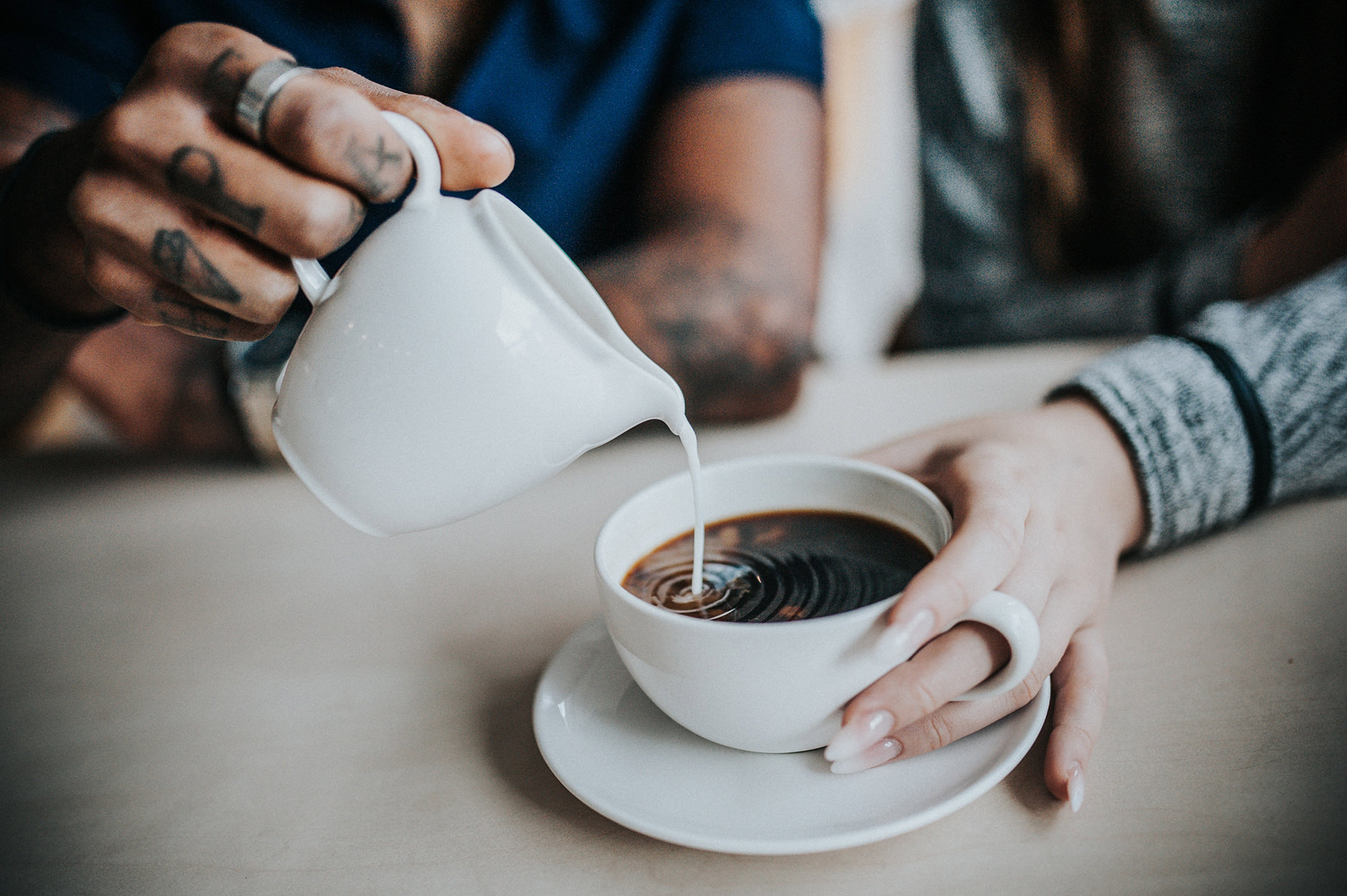Education
What Does Teaching ‘White Privilege’ Actually Accomplish? Not What You Might Think (Or Hope)
But there is a danger that, by talking about this inequality as an all-consuming phenomenon, we will end up creating a flattened and unfair image that portrays all whites in all situations and all contexts as benefiting from unearned advantages.

I recently attended a Washington-D.C. event focused on community-building hosted by The Aspen Institute’s Weave project, which works to reduce social isolation and build bonds between Americans. During one portion of the event, various activists described how racism had impacted their lives and their communities. Following a number of such testimonials, a white woman from southeast Ohio named Sarah Adkins spoke about her own community work, which involves raising money to provide post-trauma support to individuals affected by tragedies.
Perhaps because several speakers had discussed racism and issues related to white privilege, Adkins spoke about her own self-perceived racial privilege. “I followed the perfect mold…I did all the things, I went to college, and I keep thinking of white privilege in my head so forgive me, that’s what’s in my head right now, very much white privilege,” she said, while reflecting on her middle class life in an affluent neighborhood.
But Adkins also went on to describe the reason she originally had become involved in community work—which is that her then-husband had killed both of her sons and then later took his own life. One can only imagine how much suffering this caused her. Yet she still viewed herself as privileged due to her race.
“I was wealthy, okay, I was a pharmacist, I made a lot of money, right? So after that happened, I really wanted to understand that for me there definitely was a lot of white privilege. I had money, I had health insurance, so people came in and cleaned up my house. I was able to pay for a funeral for my children,” she said.
I wondered how someone who’d lived through such an awful tragedy could consider themselves to be in any way “privileged.” Yes, she had the funding to clean up her home and bury her relatives. But nearly everybody has at least some advantages in life. It feels perverse for someone who has suffered so much to be confessing their perceived advantages.

When activists and academics invoke the phrase “white privilege,” they typically are speaking of advantages that whites, on average, have over members of other ethnic minority groups in our society. And there is no doubt that racial inequality is both real and persistent in the United States, where I live, and elsewhere. There is a sizable racial wealth gap, a life expectancy gap, and an incarceration gap. Many of America’s most pressing social problems disproportionately harm people from minority groups.
But there is a danger that, by talking about this inequality as an all-consuming phenomenon, we will end up creating a flattened and unfair image that portrays all whites in all situations and all contexts as benefiting from unearned advantages. Indeed, it’s possible that we will cause people to confuse a structural inequality that exists on the level of group average with the circumstances of every individual within a particular racial group.
In the case of Adkins’s tragic story, it’s not even clear that being white in any way constituted a form of privilege. Recent research has found a huge surge in white working-class suicides. In 2017, whites in the United States had a suicide rate of 17.8 per 100,000; for Hispanics, that rate was 6.9; for African-Americans, it was 6.9. The only group with a higher suicide rate than whites was Native Americans, at 22.2.
The phenomenon of suicide is not perfectly understood, but it is generally believed that loneliness and alienation are driving factors. Whites in America tend (on average) to be more culturally individualistic, while those from other groups tend (again, on average) to exhibit more collectivist social values. The group of which I am part, Asian-Americans, would be “privileged” on this index, since our rate (6.6) is well below that of whites. But would it really be wise for me to tackle the social problem of suicide by zooming in on some idea of “Asian privilege?”
In fact, research recently published in the Journal of Experimental Psychology suggests that such an approach wouldn’t just be unhelpful. It would actually be harmful.
I recently interviewed Erin Cooley, a psychology professor and lead researcher at Colgate University, about her research for Greater Good magazine. She studies prejudice and structural inequality and her research has illuminated the ways in which persistent racism continues to negatively impact the lives of racial minorities in America. A study she recently published, for instance, shows how participants were more likely to associate poverty with blacks as opposed to whites. Her team found that this association helps predict opposition toward policies that involve economic redistribution, since it is widely believed that these policies benefit blacks over whites.
Her team was curious about the impact of teaching people about white privilege. Would it make people more sympathetic toward poor blacks? As part of their research, Cooley and her colleagues offered study participants a reading on white privilege—based partly on the seminal work of Peggy McIntosh, who originally formulated the concept in the 1980s—and then described to them the plight of a hypothetical man, identified as either white or black, who is down on his luck.

What the researchers found is that among social liberals—i.e., participants who had indicated that they hold liberal beliefs about social issues—reading a text about white privilege did nothing to significantly increase their sympathy toward the plight of poor blacks. But, as Cooley told me, “it did significantly bump down their sympathy for a [hypothetical] poor white person.” (Among conservative participants, there was observed no significant change in attitudes at all.)
What accounts for this? One possibility is that social liberals are internalizing white-privilege lessons in a way that flattens the image of whites, portraying all of them as inherently privileged. So if a white person is poor, it must be his or her own fault. After all, they’ve had all sorts of advantages in life that others haven’t.
When we talk about racial inequality, it is important to understand that we’re often talking about structural or society-wide averages, not the status of all individuals at all times. It is true, for instance, that African Americans are disproportionately impacted by poverty. That means a higher percentage of African Americans live in poverty as compared to whites. But the largest number of individuals in the United States who live in poverty are white. We can’t, and we shouldn’t, assume anything about any individual’s life solely based on his or her race, or based on larger facts about racial inequality.
Racism exists, of course, and its impact is disproportionately felt by society’s minority populations. I have personally spent a decent chunk of my reporting career documenting this. But the fact that disparate treatment is inflicted on racial minorities doesn’t prove the existence of an all-encompassing pattern of white privilege. “If you’re white, chances are seeing a police officer fills you with one of two things: relief or gratitude,” writes one advocate of a privilege-centric worldview. But around half of the people who are killed every year by U.S. police officers are white. True, police violence falls disproportionately on ethnic minorities, especially African Americans. But if you’re white and you’ve been abused by a police officer, your individual experience may be just as painful as that of a black person who’s suffered similar abuse.
If we extend the logic of privilege beyond the issue of race, it’s easy to see the flaws with this approach. We know, for instance, that 93 percent of people in U.S. federal prisons are men. In nearly every part of the criminal justice system, in fact, men on average have it worse than women do. But does that then mean we should be discussing “female privilege”? Would it be beneficial to the men behind bars for women to proclaim awareness of their “privileged” status?
A typical conservative response to privilege discourse is to downplay the very real inequalities that exist. This isn’t helpful. We can’t escape talking about inequality in a diverse society. For instance, we shouldn’t shy away from looking at high maternal mortality rates among black women and how it may be linked to inadequate cultural competence among medical staff. However, what I would suggest is that we change the way we talk about this inequality. Asking whites to publicly confess their white privilege—in a manner that often resembles a religious ritual more than anything else—may lead us to unfairly flatten the experience of whites while, ironically, actually shifting attention away from those who are underprivileged. The Cooley study shows that this isn’t just a hypothetical concern; it’s a reality that has been demonstrated through research.
One alternative to white-privilege discourse would be to focus on the causes and consequences of deprivation rather than on naming groups of people we believe to hold special advantages—and to stop referring to things that we should expect for all people as “privileges.” It is not a privilege to have a decent and safe childbirth, or avoid harassment by the police, or to have enough to eat. All of those things should be something we expect. While we can and should aggressively address inequality, we should make sure the methods we employ serve to strengthen our sense of empathy rather than sap it.
Zaid Jilani, a journalist, is currently on fellowship, studying political and social polarization at UC Berkeley’s Greater Good Science Center. He is also the co-host of the podcast Extremely Offline, which brings together guests from competing political tribes for civil dialogue. Follow him on Twitter @ZaidJilani.
Featured image: Photo taken at Baltimore Women’s March, 2018.






